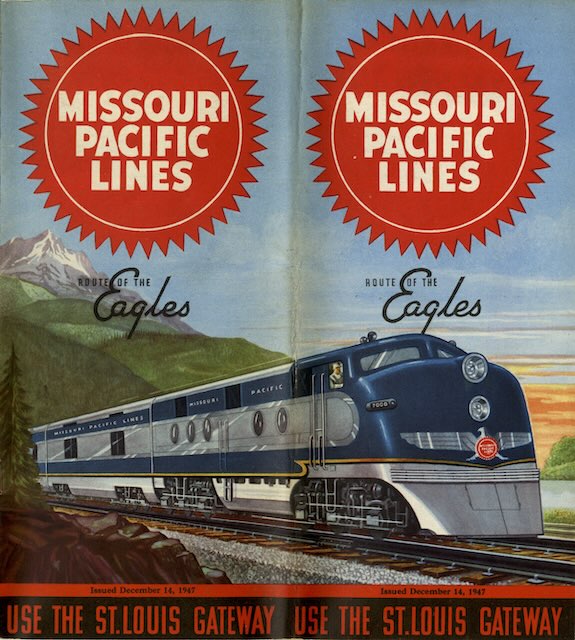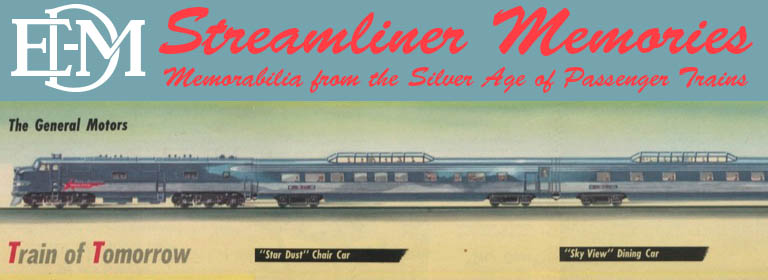The inside front cover of this timetable advertises the through sleeping cars and coaches between New York and Texas on the Sunshine Special, a train that was inaugurated in 1915 and probably still carried heavyweight cars (and is shown being pulled by a steam locomotive) in 1947. The through coaches went from New York to Dallas-Fort Worth and San Antonio while the through sleepers went from New York and Washington to eight Texas cities plus Mexico City.
 Click image to download a 27.0-MB PDF of this 48-page timetable.
Click image to download a 27.0-MB PDF of this 48-page timetable.
The page before the centerfold map is an article about Wichita, the “farm-industrial center of Southern Kansas.” The page after the map is an article about the Lower Rio Grande Valley that is similar to one in the November 1948 timetable if only because they both emphasize the “delicious grapefruit” grown in the valley.
The inside back cover has a picture of the Royal Gorge, but not the bottom of the gorge where Rio Grande trains went but the suspension bridge across the gorge that, the article claimed, was hthe “world’s highest bridge.” The article does mention the Royal Gorge, “Missouri Pacific’s popular through train between St. Louis and Salt Lake City.” This train would remain on the timetable under that name until about 1951, though after Fall 1948 it is shown as only going as far west as Kansas City.
The back cover is a historic article about “the West’s first railroad,” the Pacific Railroad of Missouri. This offered the first train service west of the Mississippi in December 1852, though at that time it only went five miles west of St. Louis. It reached Missouri’s capital, Jefferson City, in 1856 and Sedalia, Missouri, 168 miles west of St. Louis, in February 1861. Further progress was slowed by the Civil War but the railroad managed to reach Kansas City in September 1865.
The article is accompanied by a painting which, it says, is on display in the Missouri Pacific Museum at the company’s headquarters in St. Louis. The painting shows a crew of all black laborers (probably slaves) constructing the rail line overseen by one white man. The artist who did the painting isn’t named but it is possible that it was Frank Nuderscher, who did several paintings for the museum, one of which was in the April 1947 timetable.
